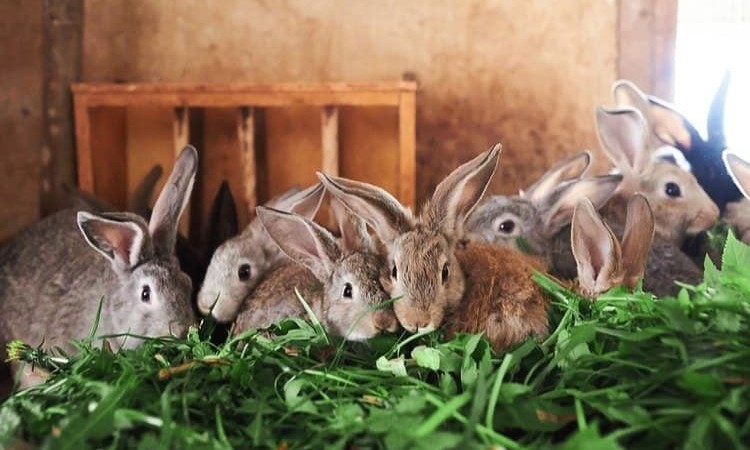

Rabbits have a high reproductive rate compared to other livestock. They become sexually mature within a few months of birth and have relatively short pregnancies. They produce large litters and are unique in that they can be re-bred immediately after kindling (giving birth). With an intensive breeding program, a doe can be expected to have 60 weaned young a year. Such intensive breeding is not recommended, however, for the beginner and is seldom used in commercial production.
Breeding Schedule
When setting up a breeding system for your rabbitry, your first consideration should be your purpose for raising rabbits. If you’re raising rabbits for meat, you may want to produce as many fryers as possible. If you’re mostly interested in showing rabbits, you may want to have only a few litters each year and time them to provide stock of the proper age for showing.
Rabbit breeding schedules are usually based on 7-day intervals for ease in record keeping. Many commercial rabbit producers will breed does back 14 to 21 days after kindling. A 35-day breed-back schedule is recommended. You can shorten the interval between kindling and breeding as you gain experience. However, intensive breeding programs may increase the number of does culled (put down) annually due to “burn out”.
No matter what breeding schedule you use, always check the condition of the rabbits before mating them. It would not be wise to mate a doe again in poor condition or one nursing a large litter 21 days after kindling, as it could affect her reproductive performance. This could result in poor fertility, a small litter or high death rate in the young produced. Make sure the doe is in acceptable health conditions to limit risk of potential problems. When possible, mate several does on the same day or within a few days of one another. Kindling will take place at about the same time (28 to 32 days later), which will make fostering the young easier if it becomes necessary. Does should be expected to produce seven or eight young in a litter, but they may occasionally have smaller or bigger litters, depending on the specific breed of rabbit.
Mature bucks can be used daily for single mating over long periods without affecting their fertility. However, if they are used to service several does within a day or two, they should be allowed to rest for a few days before mating again.
In large commercial rabbitries, one buck may be kept for each 10 to 15 does, while small producers may need a buck to doe ratio of 1 to 5 or even 1 to 2. An intensive breeding program will require more bucks to service the same number of does than a less intensive breeding schedule. Remember to use the same buck with the same does during the breeding to ensure the correct pedigree.
 Contact Jaguza Support
Contact Jaguza Support